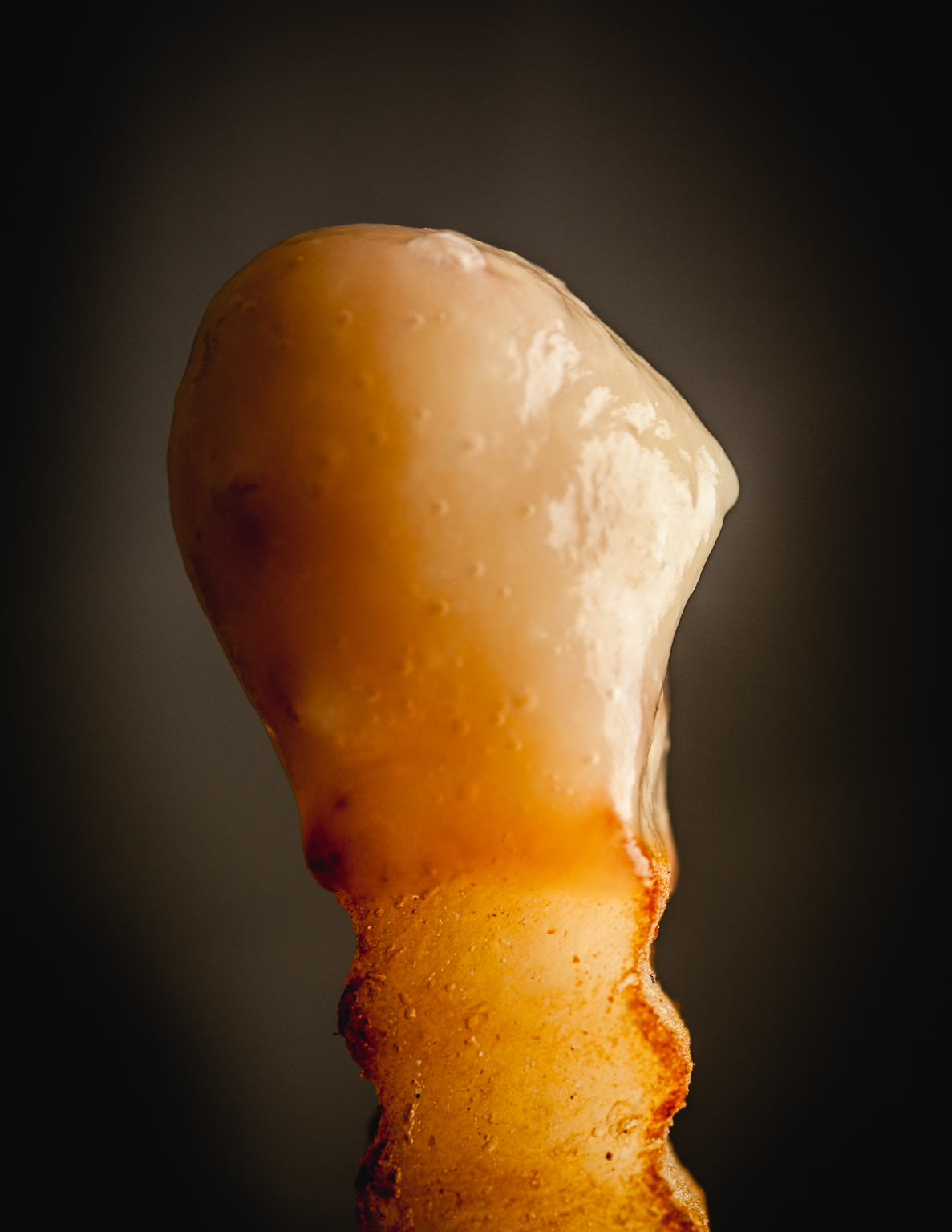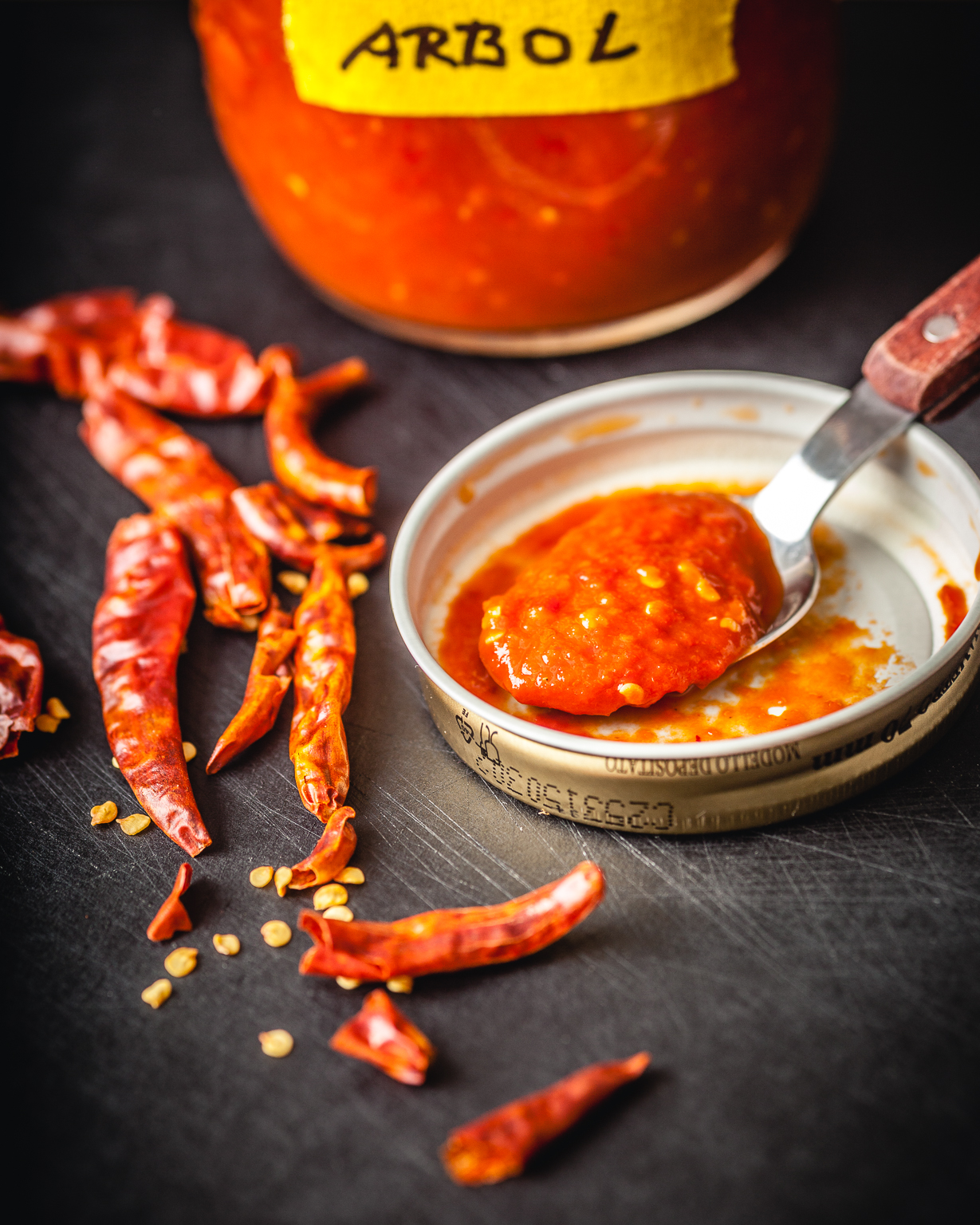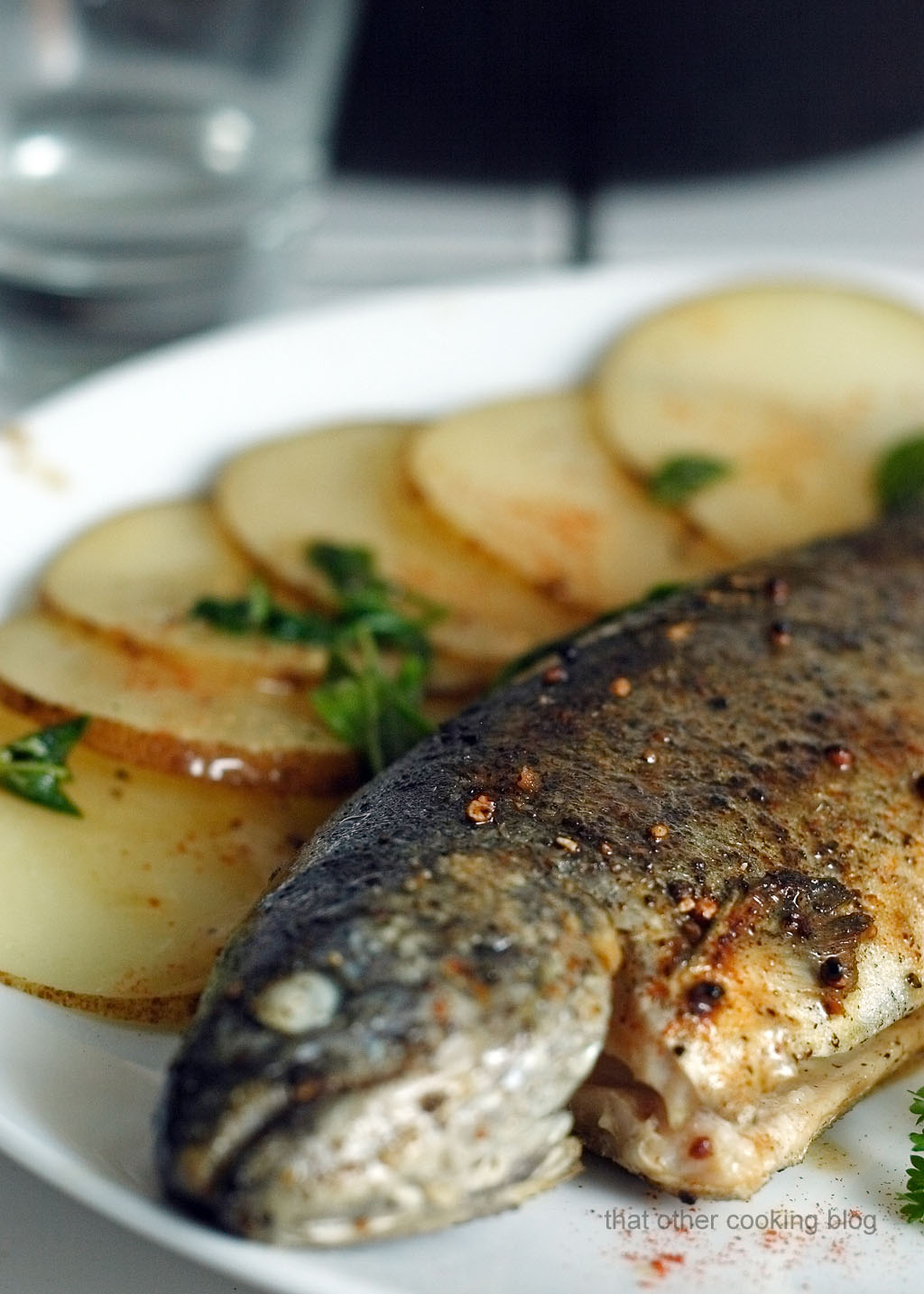Yikes! that was a long post title! I always struggle with post titles. I wanna summarize what the post is about and not come off entirely lame yet pay attention to SEO hocus-pocus, etc.. but you be the judge. Now, if you don’t care for that sorta thing, I mean, blog post titles… and you want to instead try something really cool and awesome in the kitchen, today is a fortunate day. Both passion for cooking sous vide and my renewed passion for home fermentation come together here in the nicest of ways. If you’ve been paying attention, I’ve posted about hot sauces recently. About a month ago I changed my approach and stopped using vinegar all together for making hot sauce, switching my attention over to lactic acid instead. Lacto-fermentation not only preserves foods in an acidic environment that welcomes good bacteria and good yeast even good molds, it also has a tremendous impact in flavor and texture. I figured I could take advantage of this and combine it with a popular sous vide preparation: Garlic Confit.

Garlic confit.
Traditional garlic confit requires cooking garlic cloves, whole in oil at a relatively low temperature ensuring there’s no browning. The cloves become very soft and the oil used, keeps oxygen away from the garlic, helping preserving it, although immediate refrigeration is recommended to ward off botulism. The same idea can be accomplished using sous vide. It’s actually a lot easier to prepare garlic confit using the electronically controlled water heater than over an unruly stove. The trickiest part of making traditional garlic confit is controlling the amount of heat applied. Even in the lowest settings most stoves are simply too hot and brown garlic doesn’t taste good. Some people use diffusers, etc. With sous vide this isn’t an issue. Might take longer but rest assured it will be perfect. You should move garlic confit into the fridge right after cooking to prevent any pathogen reproduction.

Ingredients:
700g garlic cloves. Don’t bother peeling.
100g water.
16g salt. About 2%
Sous vide garlic confit.
This is as simple as it gets. Place the garlic cloves in a sous vide bag. Add water. Add the salt. Seal. Cook at 88C for about 7 hours. You could add herbs to the baggie as well. Thyme and rosemary are classic additions. I didn’t use any this time because this was my first time trying to ferment the confit and didn’t want too many flavours layered in just yet. I didn’t use olive oil either. After fermentation, olive oil can be added for flavor if you really want. You could also use olive oil instead of water in the beginning of cooking.
Prepare a pot and a strainer. After the cooking is done, transfer the content of the bag into the strainer and using a spatula force the garlic through. The garlic should be so soft that this should be fairly easy. I used a fine chinoise and it took some work but the silky texture of the sauce was a wonderful reward. At this point you should taste and adjust salt if needed. This sauce is ready to be used as is. It’s an amazing product and if you don’t want to experiment with phase 2, then go enjoy this sauce as is. Just make sure you store it in the fridge. Should stay for a couple of weeks to be safe. But… if you want to give this sauce a more complex flavour profile, then fermentation, here we go.

Fermenting the garlic sauce.
Ok, if you thought the sous vide step was easy… then check this out. For fermentation to take place certain bacteria must be present. You’re probably thinking that after 7 hours at 88C nothing in that bag should have survived and you’re right. The bag contents are pasteurized. In order to get that good bacteria back in there you have to do a couple of things. First, you need to bring the garlic sauce to room temperature fast… to around 20C (chuck in ice water). The other thing you need to do… leave the sauce exposed to your wonderful kitchen air for a few minutes. If you fear bugs might land in it, no worries, cover it with a cheese cloth, or put it in the microwave or the oven. The good bacteria is pretty much everywhere. If you have been fermenting other things, you could use a little bit of the liquid to kick start the process which I recommend because I like the probiotics going to work asap to fend off pathogens including botulism by means of decreasing Ph (simply add the fermentation juice directly into the sauce and stir in). Transfer the sauce to a bottle, leave about 2 inches of head room. This sauce is going to bubble up quite a bit and you will appreciate having some room in the bottle later on. Keep the bottle at room temperature for about 7 days. Fermentation requires practice and a lot of tasting. Seven days is just a reference. It could be longer or shorter.

How do I know it’s fermenting?
From the moment the sauce reaches room temperature and is exposed to air, fermentation starts right there. It’s slow at first and you won’t be able to tell for a day or two. Most of what’s happening mainly bacterial multiplication. The number of little guys in there needs to be high enough for fermentation to be noticeable to the naked eye. Into the third day, you’ll probably start to see little bubbles. Maybe you’ll start noticing some gas pressure when opening the bottle. The bacteria is working away and breathing out gasses. You should “burp” the bottle at least once a day. Since you’re fermenting a sauce, the bubbles will dramatically increase the volume of it (in less viscous preparation bubbles will simply raise to the top and exit the liquid instead of expanding it ), in some cases some of the sauce will actually come pouring out of the bottle. Don’t panic. Clean the bottle, shake it, close it. Maybe you need to make a little extra room in the bottle. Practice makes perfect here. And if you had any doubts before, now you know the sauce is alive and fermenting away.
The sauce is too acidic!
A garlic sauce that’s too acidic isn’t ideal in my opinion but that’s a matter of personal preference. Because the concentration of lactic acid increases in time (it eventually plateaus) it’s important to taste regularly and find the sweet spot. There are too many variables at play to determine the precise time to ferment the sauce for. Warmer climates make fermentation go faster for example. My house was a pretty even 70F during the making of this sauce and 6-7 days was probably when the sauce tasted its best.
How do I stop this acidification??
You could kill the bacteria by boiling the bottle. You could even microwave it. That’s a quick way to get it done. You could pasteurize the bottle with your sous vide appliance too, heating up your water bath to 120F and hold it for a couple of hours to make sure you heat up the bottle to the core. But I don’t like any of those options mainly because fermentation not only makes food taste great, it also has a number of positive health benefits. Killing the probiotics defeats the purpose of eating probiotic food. It’s a senseless crime guys.
The other 2 options: Eat the whole bottle of sauce the moments it reaches its peak or place the bottle in the fridge. If you can somehow time roughly when your sauce will be ready, then you could throw that BBQ party and brag about that sauce all day long. If you place the bottle in the fridge… the acidification won’t stop but it’s dramatically slowed down. You can even ferment the bottle in the fridge the entire time but keep in mind that what it took a few days t room temperature could take months in the fridge.
I’m not well versed in fridge fermentation so I won’t get into it. The whole point of fermentation was to avoid having to use a fridge, or let me rephrase that.. fermentation, a form of food preservation came to be before refrigeration was even a sci-fi dream. It just seems a bit extravagant using refrigeration to control it… but whatever works. It’s all about making food taste awesome, even if you have to cheat. It’s all a hack anyways unless you’re eating… I don’t know… sashimi?

why is my comments form gone? (I hate you WordPress!)
Wanna get more sous-vide cooking guides and cool cooking how-to’s in your mailbox? You know what needs to be done!
We never spam. You should only be getting updates when new content is posted on the site. We also respect your privacy. We don’t share your email address with anyone and you can unsubscribe anytime!




21 comments
‘Incredible’ sounds about right! I can’t wait to try this. I’m fairly new to fermentation too – I have my first batch of sauerkraut and some pickled cranberries on the go right now – so there’s something I’m not too clear about with this recipe: should I use water if I want to ferment it or will the version with oil work too? Instinct tells me it wouldn’t but I’m happy to be told I’m wrong!
So glad you liked this post! Glad to know you’re getting into the whole fermentation thing. You’re gonna love it. I have so many jars it’s a bit obsessive hahha. To answer your question, either way should work. There’s water in garlic. It’s about 60% water and that’s more than enough to get things going. I would probably recommend starting with the water version of the sauce. You can always add the olive oil after fermentation. Hope this helps!
Yes – thank you! It also occurred to me that I could kick start it with a little sauerkraut brine, but I think I’ll take your advice and use water, adding oil when it’s finished.
Of course…..re the brine: you said that already!!! I thought I came up with it by myself for a moment there 🙂
Ha! I also struggle with post titles, and thus now I’m resigning myself to make them as boring as ever (they used to be way to poetic and silly). Thanks for such a detailed post. Fermenting is something I haven’t tried yet but indeed on my to do list… and still deciding what I will try to ferment first. Your sauce looks delicious, and back it’s title, sounds perfect in a very fancy menu 😉
I went through the “let’s try to be witty here” with my pot titles… now I go back and I roll my eyes.. then tried the plain and boring titles… I like those and every now and then I add a little extra something just for SEO purposes but I doubt it makes any difference really. The first thing I ever fermented many years ago was cabbage. Just cabbage and salt. I was very proud of myself hahahaha 🙂 it’s super rewarding even though bacteria is doing all the hard work!
I’ve just dropped my 700g garlic into my Sous Vide Supreme which is set at the 88ºC specified in the recipe, but I’ve just noticed that the label on your jar says 85ºC. I doubt it will make much difference, but which was it?
I’m going to keep some of the ‘fresh’ confit to compare with the fermented version and I may freeze a little in case I ferment the rest for longer than it will keep in the fridge. Heck – if I’m organised enough I may even take tasting notes 🙂
I have to ask – do you use some mutant form of giant garlic? I ended up with about 200 cloves, unskinned, to get to the 700g and it looked more like a sackful, not the beautifully single-layered creation in your photo!
hahahaha! sorry about the confusion and I should really fix that. I only had a shot of the garlic confit in the bag from an old photoshoot I did for a magazine (which isn’t 700g of it, it’s a lot less). The difference in temperature might have a slight impact in flavor as in lower might yield more garlicky sauces but then if you up the time you might end up in the same place. The bag should inflate a bit as garlic releases some gasses when heated btw. Remember to keep the confits in the fridge. You should probably chuck the baggie in ice water before fermentation to bring it to room temp asap. I just don’t trust bacteria 🙂
Well, I have the confit fermenting now (I hope!) but I was disappointed with the ‘fresh’ product. Mine came out a dark brown and had a raw taste even though it was completely soft. I cooked it at 88ºC for seven hours. I wonder if the colour is because I didn’t peel the cloves – did you peel yours?
I bought the garlic on the same day I made the confit but there’s really no way of knowing how long it had been sitting in the supermarket. It *felt* fresh – firm. plump and juicy, but perhaps its age had something to do with the taste.
Next time I shall try both peeling the cloves and splitting them to remove any green core, which can be very bitter. A lot of work, I know, but hopefully worth it!
ok, this is extremely weird. The cloves should have gone darker but not brown, much less.. dark brown, and should taste like cooked garlic. Pretty mild. I peeled the garlic I used for my article but I can’t see that being the issue. I’ve cooked garlic confit the traditional way in the past too.. in oil, and it does get a little dark but not brown and they become soft like butter. Traditional confit cooks at a higher temperature than sous vide which tells me something went wrong with your setup. Don’t bother splitting the cloves. Ok, so.. you had garlic and water in the sous vide bag, anything else? this is very strange by the way 🙂
you should send me a picture if you can
Only salt in addition to the garlic and water. Why do you say ‘don’t bother splitting the cloves’? If they had green centres then that could explain the raw taste. I have a photo but I don’t see any way to upload it. I think I may have misled you about the colour: the cloves themselves were not especially brown but the liquid in the bag was almost molasses black, which made the puréed confit darkn and led me to think it was the skins (which were quite pink). Maybe I should have replaced it with a fresh brine for fermentation, but I didn’t want to lose its flavour and it was definitely needed to get the consistency right.
Oh – and I cooked a steak sous vide last night and it was perfect, so I’m confident my sous vide machine is properly calibrated.
yeah… even if it weren’t say.. you machine was getting the water to boiling point… that still wouldn’t necessarily explain the dark cooking liquids… high ph might explain it but that requires baking soda or some other base… total cooking puzzle
the green center would only add a little hint of bitterness and that’s the main reason high end chefs might choose to remove it. You could email me the photo. There’s a link to my email in my about section. I seriously don’t know why the liquid in the bag would be so dark. Even if your SV equipment weren’t properly calibrated. This makes absolutely no sense. I’ve prepped sous vide garlic confit a few times. I’ve never seen anything like what you describe. I’m following modernist cuisine recipe too. Really weird. I’m sorry this isn’t working out for you! :-/
Not a confit.
Hi! I’ve been wanting to try this for so long. Yesterday, I started the sous vide part and it wasn’t ready until a little too late at night. It sat in the water bath until this morning at which time it strained it and put it in a jar to ferment. I am a little freaked out about botulism and was wondering if that is a concern at this point.
Hi Denise, the extra cooking time doesn’t add any extra risk of botulism. In the very unlikely chance that the garlic used had the bacteria, the water bath temp should keep it at bay and you should be fine. Keep it chilled after cooking.